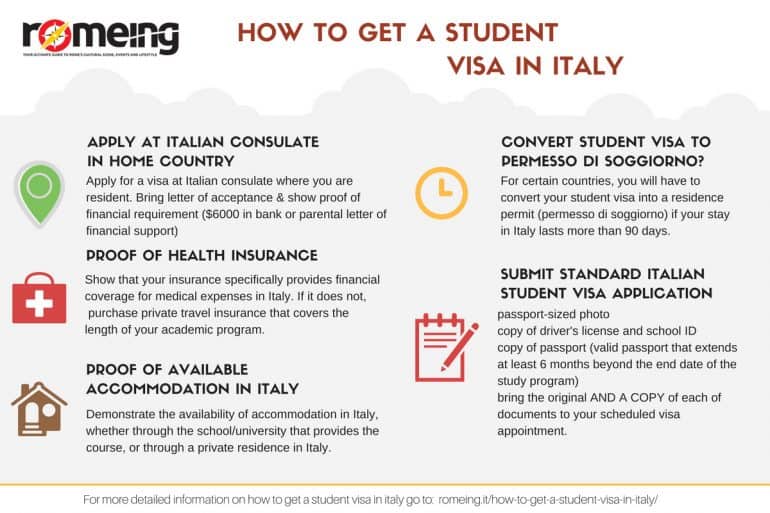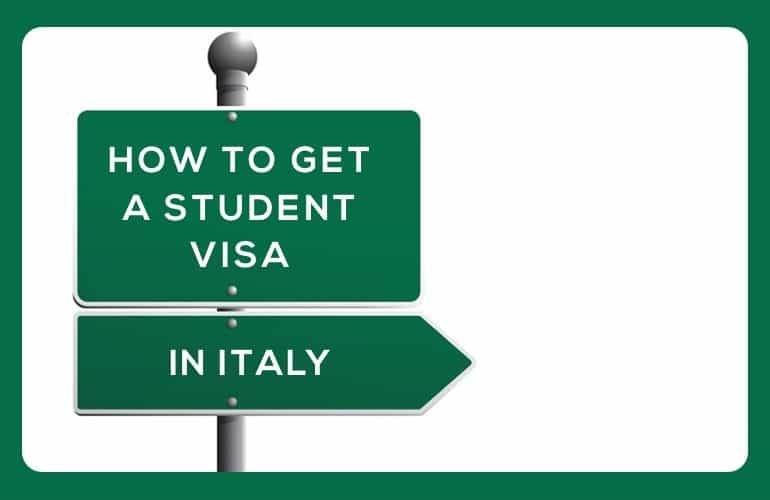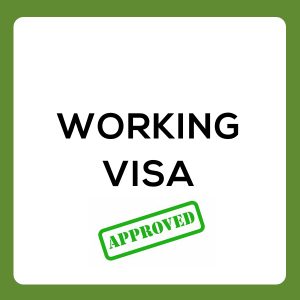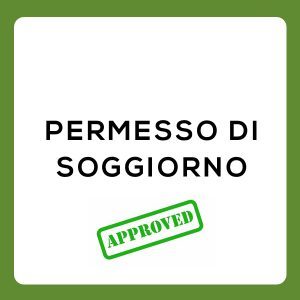What You Need to Know to Get a Student Visa in Italy
The student visa application process is, by far and away, the most straight forward means of obtaining an Italian visa. Potential students apply to their local Italian consulate in their home country for a student visa that applies to the school and academic program of their choice. Scholastic options range from U.S. university study abroad programs to Italian university degree programs to private institution language courses and even cultural associations. Programs can range from a few weeks to several years. It is not necessary that your studies result in a degree to qualify for a student visa.
All students should consult the Italian education website that lists the approved educational institutions that qualify for the student visa. Most U.S. programs operating in Italy are approved, as are all Italian-state universities. However, some private language schools that offer Italian language courses are not eligible to procure an Italian study visa. Research your program of choice before you pay any deposits on a course.
The basic Italian study visa application is as follows:
–> The student needs a letter of acceptance from their desired institution in Italy that indicates the type of academic program and length of intended study. For students attending a study abroad program through their home university, it is not enough to get a letter from your home institution. You will need a letter from the exact Italian institution you are attending.
–> The student must meet the needs of financial burden dictated by each Italian consulate. Students need to check the rules of their consulate. BE AWARE THAT YOU CAN ONLY APPLY TO THE ITALIAN CONSULATE BASED ON WHERE YOU ARE A RESIDENT. Some financial requirements oblige the students to show proof of having their own bank account and credit card with liquid cash available at a minimum of $6000. Sometimes a parental letter of financial support can be submitted in lieu of a student’s personal financials.
–> The student must show proof of health insurance. Most often the student needs to show that their insurance specifically provides financial coverage for medical expenses in Italy. Since the majority of private health insurance companies outside the EU don’t explicitly state their coverage for medical emergencies in Europe, students most often elect to purchase private travel insurance that covers the length of their academic program. BE AWARE THAT ITALIAN STATE MEDICAL INSURANCE CAN BE PURCHASED UPON ARRIVAL BUT THE ITALIAN CONSULATE WILL DEMAND TO SEE PROOF OF PERSONAL MEDICAL INSURANCE BEFORE YOU ARE ISSUED THE VISA.
–> The student must demonstrate the availability of accommodation in Italy, whether through the school or university that provides the course, or through a private residence in Italy.
–> In relation to the countries whose citizens can enter Italy for 90 days without requesting a tourist visa (for example: Americans, Australians, Canadians and many South American countries), the student visa will have to be converted into a residence permit (permesso di soggiorno) only if the stay in Italy lasts more than 90 days.
–> The student must submit the standard Italian student visa application. Some applications are required to be notarised.
–> The student must submit one passport-sized photo
–> The student must submit a copy of their driver’s license and school ID
–> The student must submit a copy of their passport
–> The student must have a valid passport that extends at least 6 months beyond the end date of the study program.
Once the student has all this paperwork (and again, consult with your consulate to be sure you have all the required documents as each Italian consulate has their own stipulations) then you need to bring the original AND A COPY of each of these documents to their scheduled visa appointment.
Most Italian consulates do not allow walk-in appointments so check their schedule for available appointment times. Usually, appointments must be booked a month to two months in advance. Some universities will facilitate the visa process for the student but any student applying to an Italian school independently will need to go to the consulate and submit the paperwork on their own.
Once you have the visa, within the first 8 days of your arrival into Italy you will need to file a Kit Permesso di Soggiorno. This is a mandatory step in the foreigner registration process that ALL VISA HOLDERS will need to do.

If you have any other questions regarding the Italian visa process, click the sections below:








